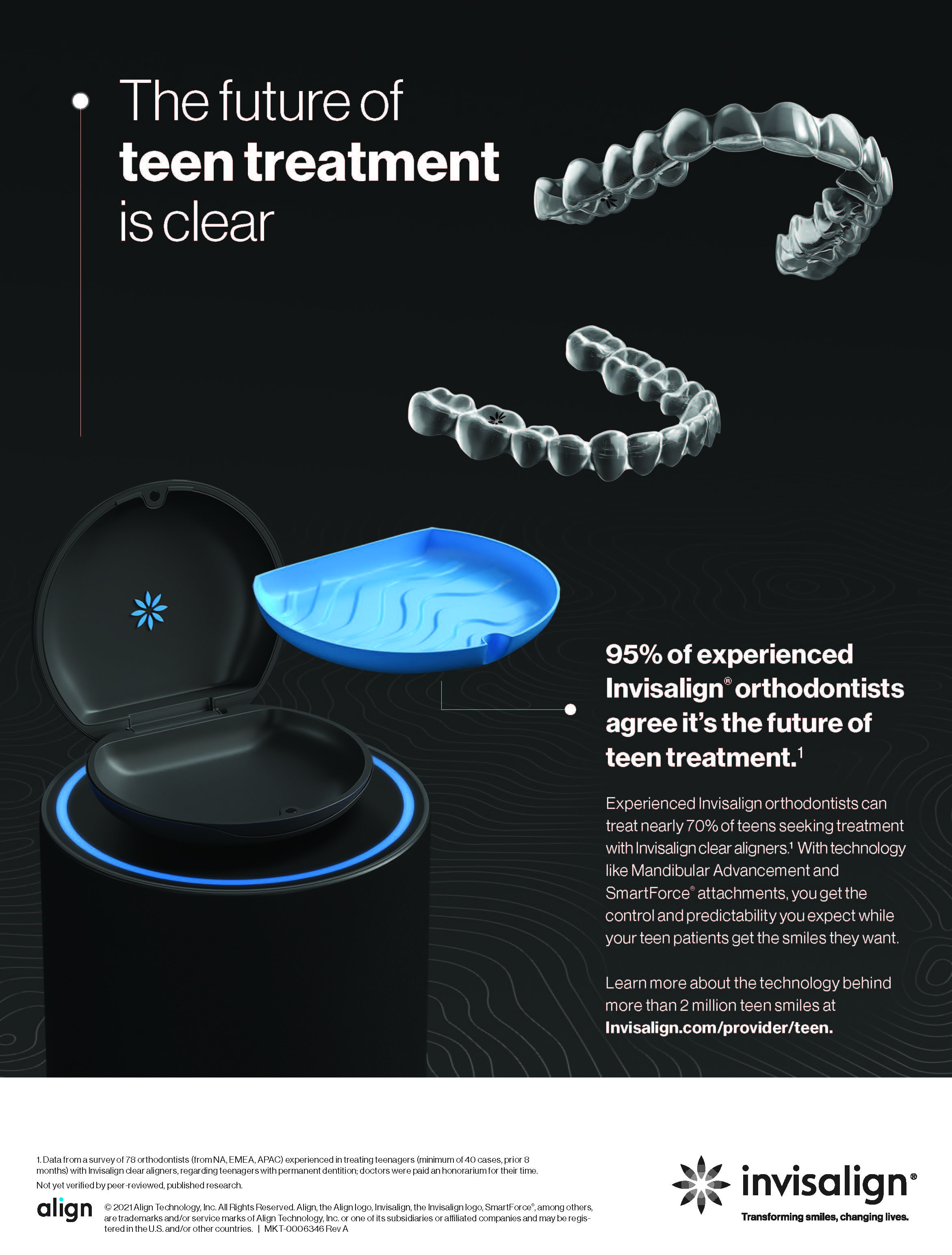As clear aligner therapy continues to claim a greater and greater share of the orthodontic market, we would certainly expect to see various adaptations of the original clinical and manufacturing protocols. Early on, to start an Invisalign patient, we had to send a polyvinyl siloxane impression, plaster casts with bite registrations, and intra- and extraoral photographs to Align Technologies, which produced a digital setup and a digital treatment plan. We then performed the requisite ClinCheck, either to accept the proposed plan or to revise it, sometimes repeatedly. Upon approval, the manufacturer turned out multiple physical models to perform the desired tooth movements, and from these the vacuum-formed plastic trays were made and finished by hand. Once aligners were fabricated for each stage of treatment, they were shipped to the prescribing doctor for delivery to the patient. As treatment progressed, as in any orthodontic case, refinements occasionally became necessary; in that case, virtually the same sequence of steps had to be repeated to produce refinement aligners.
Despite the intricacy and tedium of the protocol, Invisalign eventually became the predominant system for delivering orthodontic treatment throughout the world. It didn’t take long for “Invisalign Only” practices to pop up. “Boutique practices” for clear aligner therapy appeared in shopping malls, often resembling beauty salons more than dental offices. No matter how cozy these settings became, however, the tiresome records, prescription, and delivery protocols remained essentially unchanged.
Similar articles from the archive:
- THE EDITOR'S CORNER Complex Treatment with Clear Aligners January 2021
- THE EDITOR'S CORNER New Possibilities for Aligners April 2018
- THE EDITOR'S CORNER The Evolution of Invisalign February 2017
Most of the orthodontists and dentists I know are basically do-it-yourself people. So while most practitioners send out the bulk of their lab work—models, ceph tracings, retainers, and bite plates for orthodontists; crowns, bridges, and dentures for dentists—there are still those who want to do their own, or at least employ in-house laboratory technicians. Their reasons include the economic advantages, the convenience of having the lab right there in case appliance adjustments are needed, or simply the doctor’s preference for doing his or her own lab work (as I did for years). Since aligner treatment is the most lab-intensive orthodontic modality, it became inevitable that a number of orthodontists would eventually take on the challenge of fabricating aligners in-house. After all, the ancestors of contemporary aligners—Dr. Harold Kesling’s “tooth positioner” and Dr. Henry Nahoum’s plastic-sheet “Vacuum Formed Dental Contour Appliance,” both designed to move teeth in increments—were fabricated in-house.
The number of doctors who manufacture their own aligners continues to grow daily, to the point that such systems now have an accepted acronym: IHA (in-house aligner). Although IHAs will likely remain a small segment of the orthodontic aligner market, they are obviously here to stay. Many clinicians today are wondering how to integrate IHAs into their own practices. What investments in hardware and software must be made, and how do we adapt our office management systems to accommodate the necessary changes?
Dr. Matt Nisco addresses such questions in this month’s JCO Aligner Corner. In his well-written and well-illustrated article, Dr. Nisco discusses the essential components of an IHA system, as well as the staffing requirements and protocols for exams, appointments, fees, and retention. If an IHA system seems overly challenging to you, Dr. Nisco may alleviate your anxiety.
RGK



COMMENTS
.